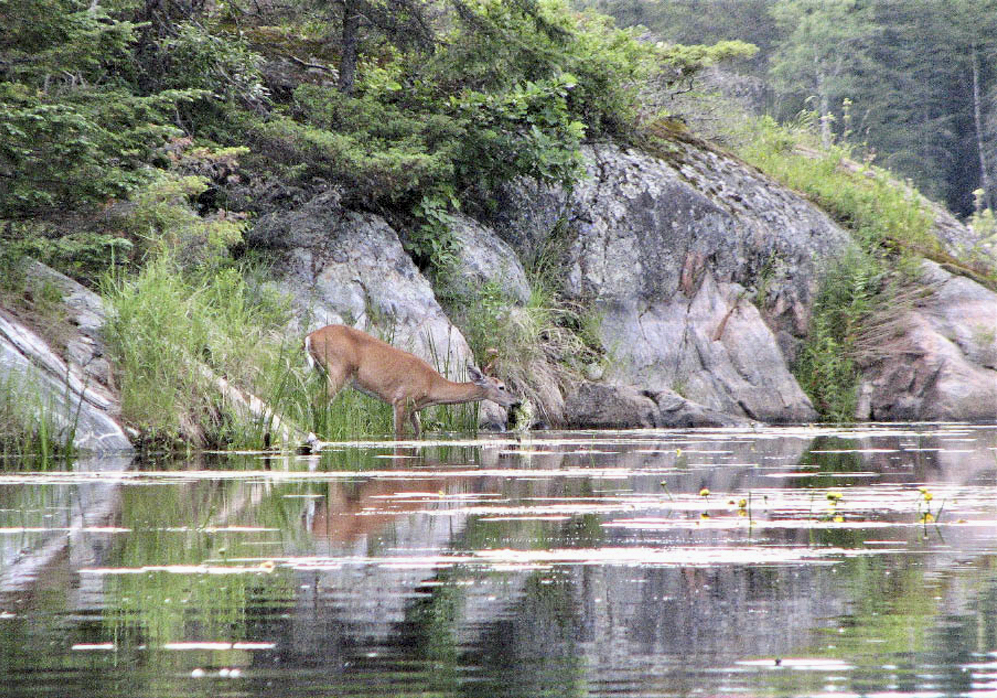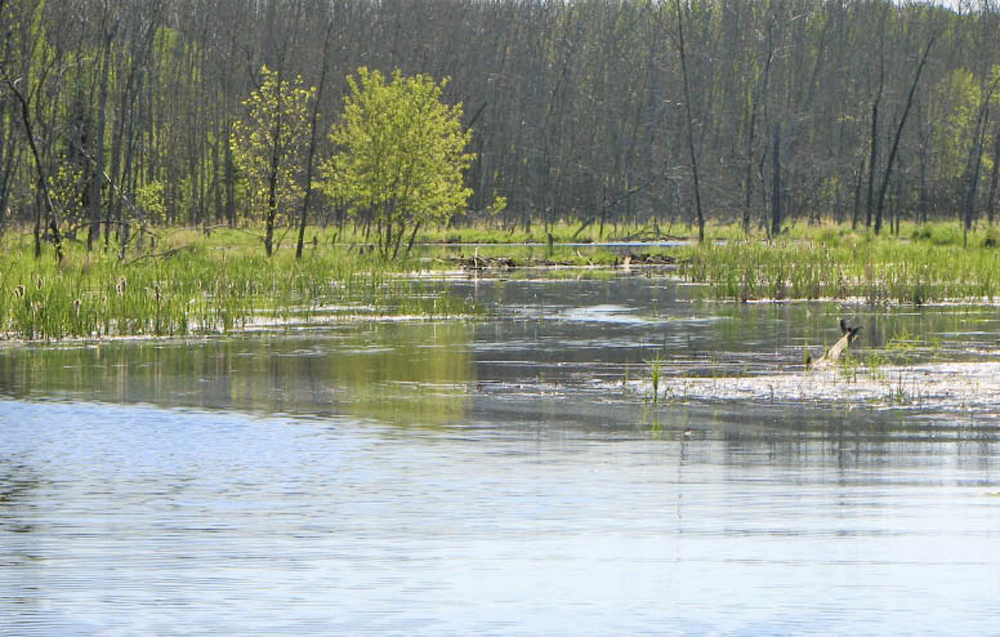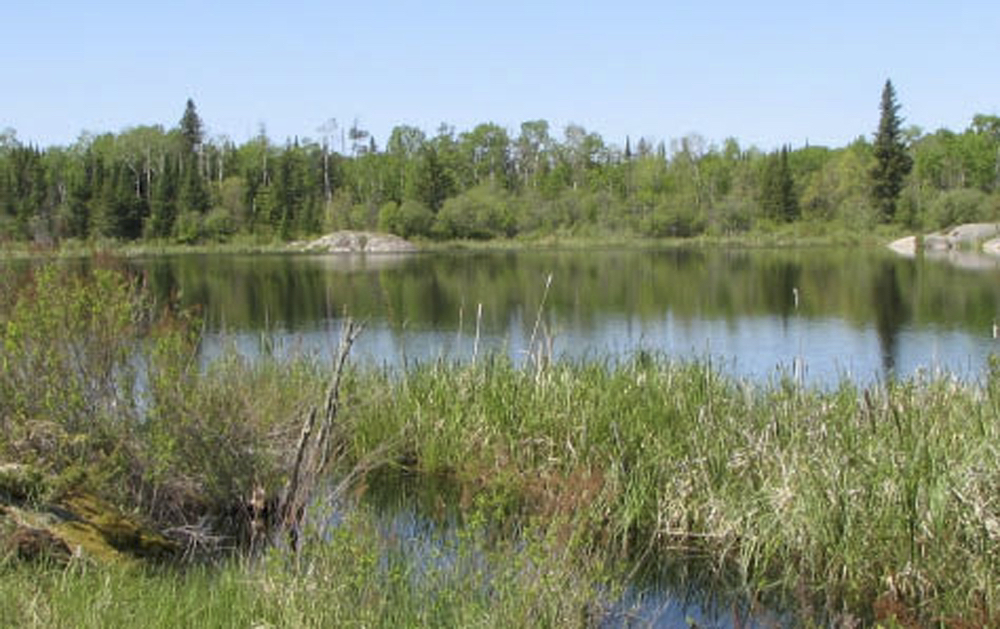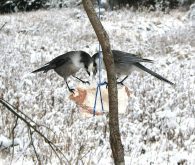It was a calm spring day as my son Mark and I made our way up a grassy creek, swollen with the yearly influx of meltwater. Our targets for the day were post-spawn northern pike or, in common parlance, jackfish or jacks.
We were moving under paddle power, having previously made the mistake of motoring up to the spot, only to watch a big fish spook, break the surface and dart away. This time, we would be more careful.
I was busy taking in the surrounding music of songbirds and my son’s graceful fly-casting when the tranquility was broken. The wake of a great fish split the water, moving in on Mark’s streamer fly, and the fight was on.
Read Also

Local farm businesses, groups look forward to Manitoba Ag Days 2026
Most of agriculture is seemingly at Manitoba Ag Days each January: Manitoba agribusinesses and farm groups look forward to connecting with farmers at the 2026 show.
- RELATED: Fishing rules in Manitoba for 2024
Ten minutes later, after a series of leaps, runs and a few prayers as the fish bore deep into the weeds, we were admiring the 110-centimetre pike, the best we had ever caught in our home waters. It was massive and deep-bodied, weighing a little over 10 kilograms. After a few quick pictures, she was released.

Manitoba boasts countless road accessible areas with healthy populations of small and medium-sized pike, with maybe a few beasts lurking.
Pike take lures and bait readily and fight hard. I’ve found them to be good eating and they’re a good fish for new anglers to target. With all that going for them, you’d think pike would be held in high esteem, but for most anglers, they aren’t.
A top predator
According to the Fishes of Manitoba reference book, the largest angler-caught northern pike was a metre and a half long and weighed 20 kg. In waters with fishing pressure, most fish caught will average 40-75 cm.

Just about any lake or slow-moving river in our region likely has pike, assuming there are adequate oxygen levels through the winter. This top-of-the-food-chain predator is built for sprints and will ambush just about anything that moves, including insects, leaches, frogs, minnows, small fish, big fish, ducklings, muskrats – you get the idea. It is not unusual for pike to take prey up to one-third of their body weight.
Bigger specimens tend to rely on fewer, larger meals, after which they settle down to digest.
Pike spend most of their time motionless or slowly cruising. Once possible prey gets their attention, however, there is an instantaneous acceleration into an open-mouthed, nasty bite. Rows of long, sharp teeth on the lower jaw are complemented by banks of back-pointing teeth in the upper mouth, keeping victims from going anywhere but down the gullet.
This hunting style explains why pike strikes on a fishing rod are usually hard, and usually begin with the fish already headed in another direction.
I have an underwater camera that has allowed me to watch pike strikes up close while ice fishing. Often, they’ll glide into view, stop a few inches from the lure and then indifferently slip away. If you see the eye rotate to focus on the bait and the fins quiver, get ready for a lightning-fast strike. Other times, I don’t even see the fish until it smashes into the lure at speed.
Spring adventures
After spawning, when the fish tend to hang around in shallower and warmer waters, is one of the best times to fish for pike. Many big fish are caught in May and early June.
Pike spawn in marshes or flooded grasses soon after the ice recedes. Once, I stumbled on fish spawning in a flooded meadow along a lake: one large female followed by five smaller suitors.
Males fertilize the eggs where they fall. After that, the little hellions are on their own. Young pike start by feeding on insects and soon switch to minnows, including prey that may be close to their own size. Those that survive to autumn may reach around 10 cm long.

Concentrate your efforts in these shallows, especially where water temperatures may be higher, such as where a creek enters a lake. Minnow-shaped lures, spoons or spinner baits of all sizes work well. I also tie flies to look like minnows or small fish, which are also effective.
Dead baits are another technique. Frozen minnows on a pickerel rig will work, but I prefer larger bait, like smelts. Others may use perch, tullibee or store-bought frozen sardines.
This fearsome predator may not be doing much chasing at this time of the year, but it is not above taking a large, easy meal, like a dead fish mysteriously hanging in the water column.
I use a slip bobber and a treble hook array called a quick-strike rig. This technique blends a relaxing, sit-back-and-watch approach with the fun of a fight when pike takes both bait and bobber on a trip across the water. It can be very effective for anglers fishing from shore.

Pike past spring
Come summer, bigger pike head to deeper waters. Smaller fish can still be caught in the shallows, including marshy areas or the shallows off rocky or reedy shores.
The fish may not be big, but shallow pike fishing with surface lures is pure excitement. I like lures that imitate an injured minnow, which seem to drive them crazy. Attacking fish often leap into the air. You will miss more than you hook, but the heart-stopping strikes are worth it.
If this approach isn’t your cup of tea, use sinking or shallow-diving lures cast or trolled along the edge of weed beds.
If you want bigger fish, look deeper. People often troll with large crankbaits or spoons along drop-offs or points. If you are on a river, the slack water areas beside the current can hold big fish.
Come winter, pike are one of my two favourite species for ice fishing. (The other is yellow perch, simply because they taste so good.) Pike can be caught on a jigged spoon or a jig-and-minnow combination. A stationary ‘tip-up’ rig set with a large smelt, tullibee or sardine often catches me more and larger fish.

Eating pike
Bringing pike home for the pan is often seen as a consolation prize. While many will grudgingly accept that pike taste fine, they often end the discussion by complaining about the many bones.
They have a point. Picking through a pike’s extra line of ‘Y’ bones at the dinner table, and maybe choking on the odd one that you missed, is no fun. Those bones also left me with a jaundiced view of pike as table fare.
Then I learned filleting techniques that produce boneless fillets. Suddenly pike became a top-tier choice for dinner.
I first learned what I call the “backstrap” approach – removing a section of flesh along the back to expose the Y bones before filleting around them. I now use a technique that excises the Y bones from a complete fillet. Both approaches require careful knife work, but they are the critical step to a premium pike dinner.
There are many videos on the internet that can help you master the skill.
I personally haven’t found much difference in taste between pike and walleye in side-by-side tests. I’ll give walleye the edge for pan frying, but I prefer pike for baking or poaching, chowders and fish cakes.
Pike have a well-suited texture for baking or poaching. I just tried a recipe with pike fillets and sauteed pieces of kolbassa baked in a tomato/vegetable sauce. Served with wild rice, it was sublime. Pike chowder served with garlic toast on a frigid winter day has become one of my new comfort foods. Pickled pike also turns out well.
















